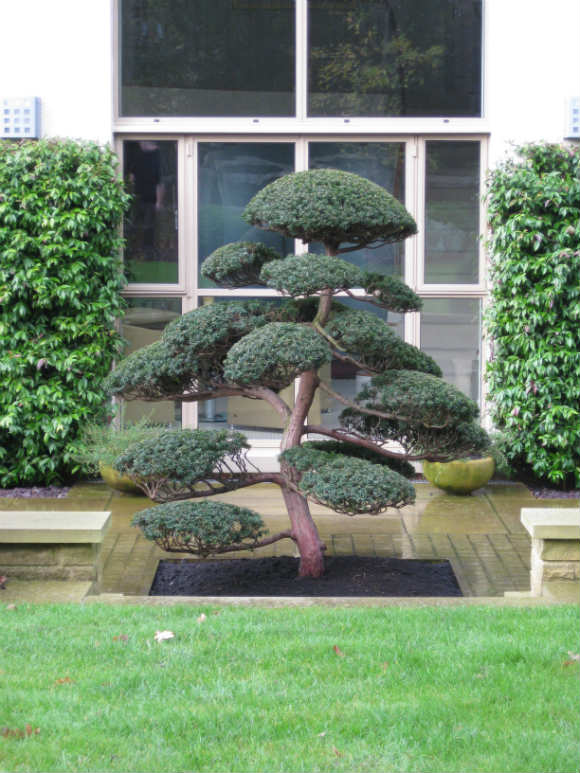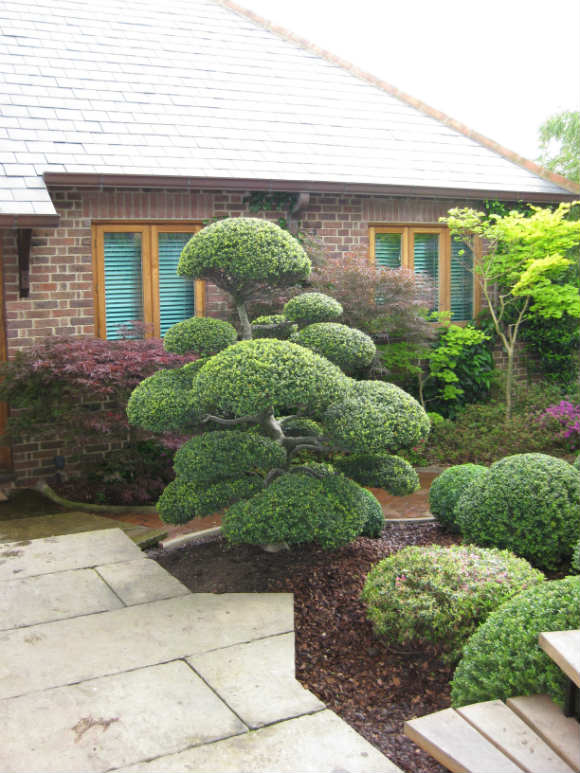Niwaki
garden tree
NIWAKI
The literal translation of the Japanese expression ‘Niwaki’ is ‘garden tree’ – being distinct from ‘Bonsai’ meaning ‘potted tree’. Niwaki are the bigger, easy ones that go in the ground. Bonsai are the little, difficult ones that stay in pots. We only do Niwaki.
One thing they have in common is the Japanese obsession with miniaturisation. The Niwaki (and to some extent the Bonsai) seem to be a stylised and miniaturised caricature of the finely shaped Pine trees encountered in windy and coastal sites throughout the world – not just Japan.
The appeal is of a beautiful, manicured piece of sculpture that doesn’t display the kind of symmetry that we’re used to in Europe but of something closely allied – balance. A well executed Niwaki is highly asymmetric and yet beautifully balanced at the same time. A kind of symmetry.
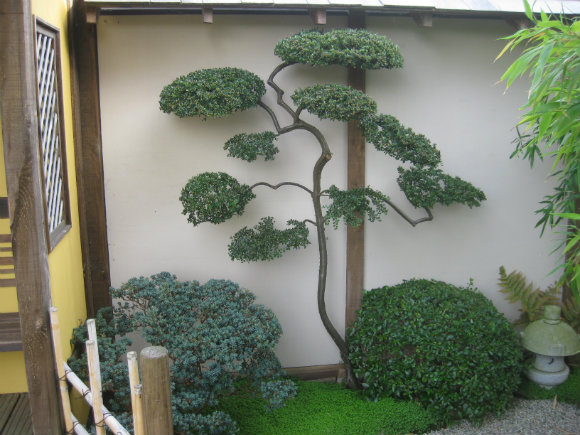
For many years we’ve imported the Japanese grown Niwaki grown either from Ilex crenata (a tiny leafed Holly, native to Japan) or Taxus cuspidata (the native Japanese Yew, very similar to our own Taxus baccata). Lovely, but by the time they arrive on our shores, pricey.
The Japanese have always relied on native plants for their gardens, their Bonsai and their Niwaki. They’re lucky, they have a fantastic pallet to work from whereas we had virtually all our trees wiped out by the last ice age and over the last 200 years have relied on our intrepid empire building plant hunters to supply us with raw material.
When we decided to grow our own (as far as we know we’re the only nursery doing this in Britain) we had the enjoyable task of deciding which plants to use. ‘Small leaves’, ‘pretty’ and ‘very reliable’ were the criteria and after much deliberation we plumped for Phillyrea latifolia (a native European) and Myrtus apiculata (a native of Chile and Argentina).
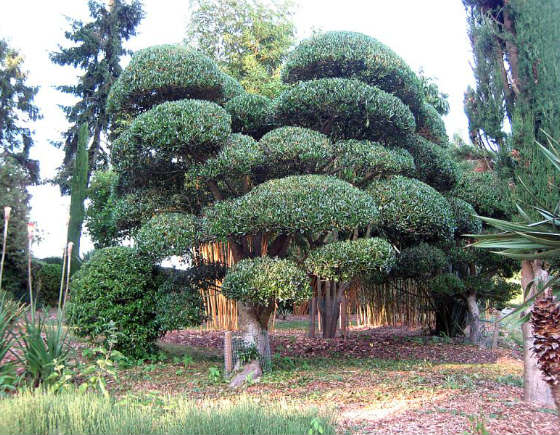
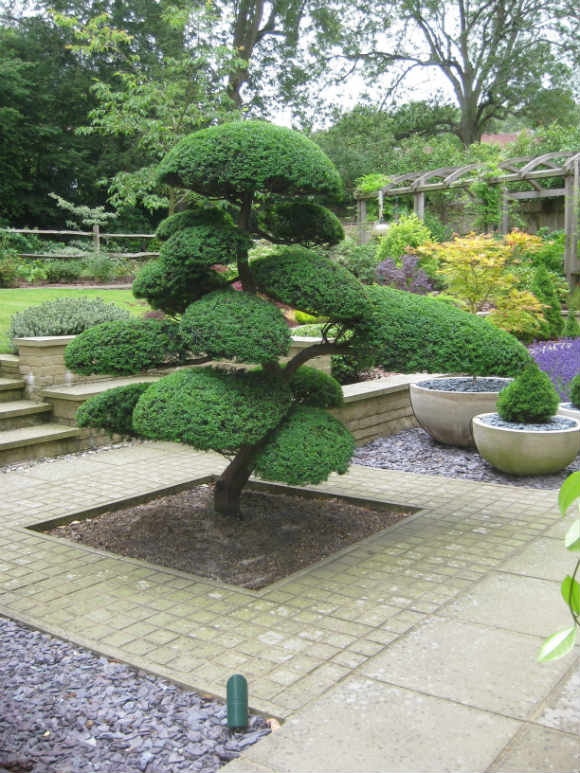
We never regretted our decision but always point out that the two types have slightly different applications:
Phillyrea latifolia (The Green Olive) is tough as old boots and is given to being used in a cold and exposed rural garden, often viewed from a distance (as will happen in large rural gardens).
The Myrtus apiculata (The Orange Barked Myrtle also known as Luma apiculata) on the other hand is less suitable in gardens where it might be exposed to very cold winds from the north or east. Wind in itself is not a problem and neither are low temperatures but a combination of the two can be. An explanation: with some evergreens, if the ground is frozen and the wind blows, the plant will try to transpire (lose moisture from its leaves) at a higher than normal rate but because the roots are frozen it can’t, and the plant can be damaged due to drying out. Protect it from cold winds and it’ll be fine. The net result is that the Myrtle Niwaki is usually better in a well protected urban garden. The fact that it has beautiful orange and white patched bark, nice little white flowers and attractive orangey coloured new growth also, happily, means it’s a good plant to enjoy from close quarters – usually the case in a small urban garden.
